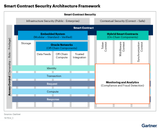>>60725401Assume the Chainlink network secures $100T. Each of the n nodes in the first-tier DON stakes d LINK.
Total stake = d * n. To corrupt the DON, an attacker needs control of n/2 nodes, totaling:
d * (n/2) stake.
Any node can raise an alert if data is incorrect. If validated by the second-tier, the watchdog earns the attacker’s stake:
d * (n/2).
To suppress alerts, an attacker must bribe all n nodes with at least d * (n/2) each.
Total bribe cost = n * (d * (n/2)) = (d * n2) / 2.
This quadratic cost makes attacks more expensive as the network decentralizes.
Assume n = 33 nodes (current high-performance DON operators).
To secure $100T:
(d * 332) / 2 = 100T
(d * 1089) / 2 = 100T
Solving:
d = (2 * 100T) / 1089 ≈ $183.65B per node
Total stake: d * n ≈ 183.65B * 33 ≈ $6.06T
If 1B LINK is staked, LINK price =
$6.06T / 1B = $6,060.61
If only 678.1M LINK is staked:
$6.06T / 678.1M ≈ $8,937.33
To secure $100T with 33 nodes:
1B LINK: ~$6,060.61/LINK
678.1M LINK: ~$8,937.33/LINK
With more nodes (e.g. 1,000), required LINK per node drops, and price to secure drops (to ~$300/LINK).













